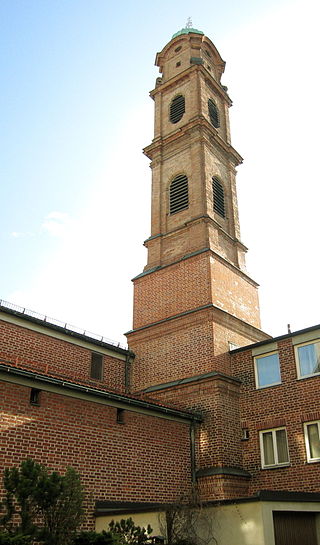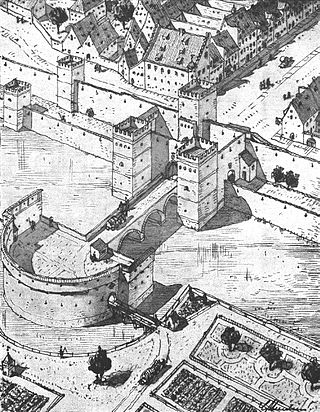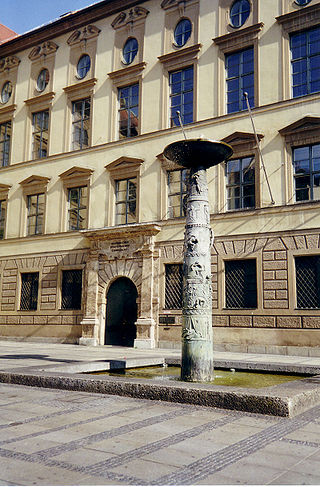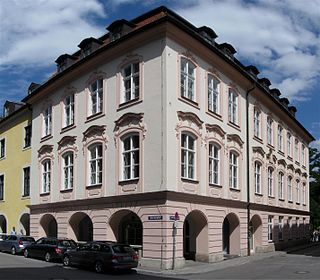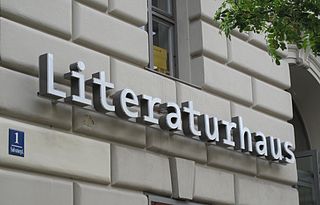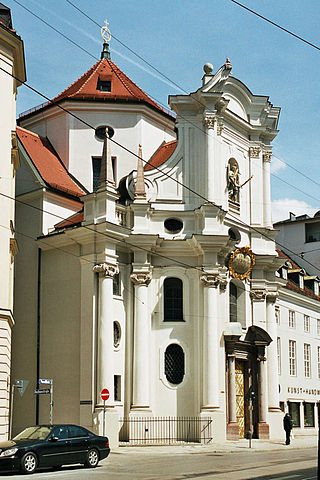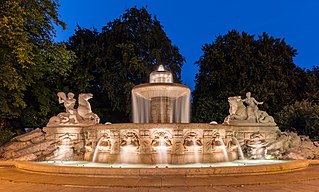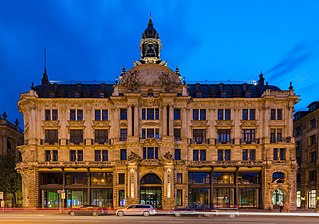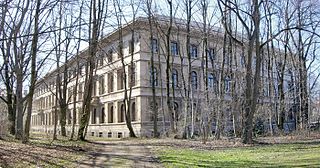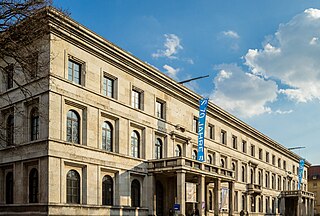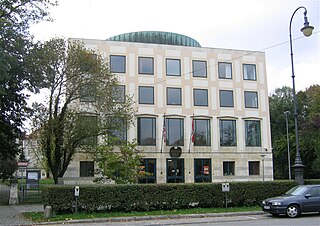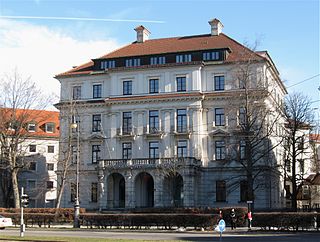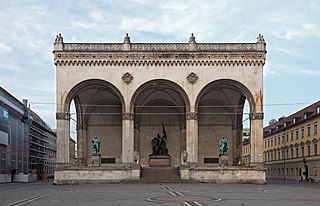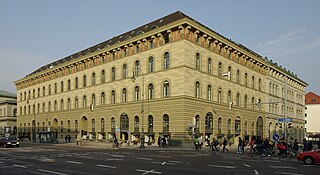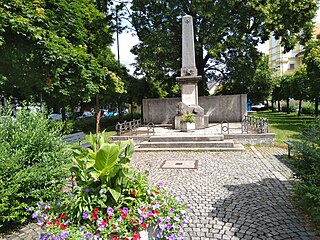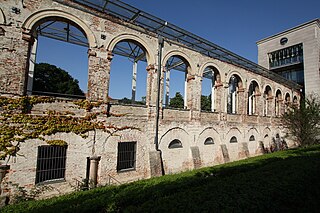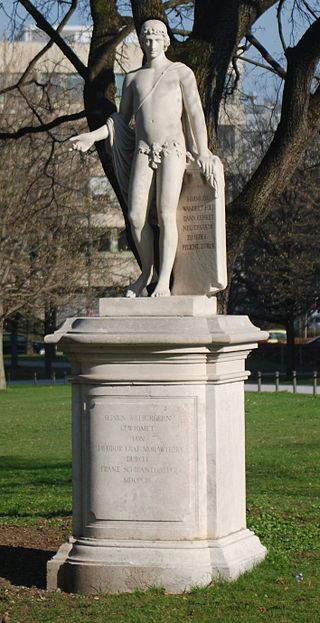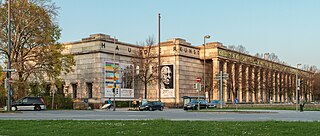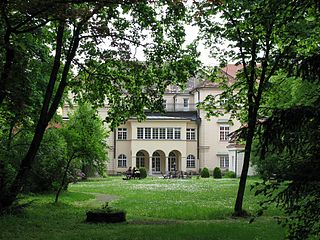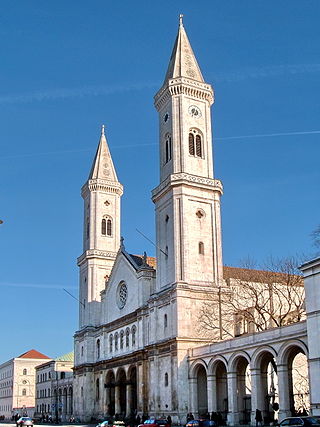Self-guided Sightseeing Tour #4 in Munich, Germany
Legend
Guided Free Walking Tours
Book free guided walking tours in Munich.
Guided Sightseeing Tours
Book guided sightseeing tours and activities in Munich.
Tour Facts
8.3 km
137 m
Experience Munich in Germany in a whole new way with our self-guided sightseeing tour. This site not only offers you practical information and insider tips, but also a rich variety of activities and sights you shouldn't miss. Whether you love art and culture, want to explore historical sites or simply want to experience the vibrant atmosphere of a lively city - you'll find everything you need for your personal adventure here.
Activities in MunichIndividual Sights in MunichSight 1: Herzogspitalkirche
Herzogspitalkirche is a Catholic church in Munich, southern Germany.
Sight 2: Karlstor
Get Ticket*Karlstor in Munich is a medieval city gate, which served as a defensive fortification and a checkpoint.
Sight 3: Richard-Strauss-Brunnen
The Richard Strauss Fountain is located in Munich's pedestrian zone in front of the Alte Akademie. It forms a flowing end on the western side of the square-like area between the Old Academy and St. Michael's Church. Opposite on the south side stood the birthplace of Richard Strauss; since autumn 2013, the Josef Pschorr House has been located there.
Sight 4: Damenstiftskirche St. Anna
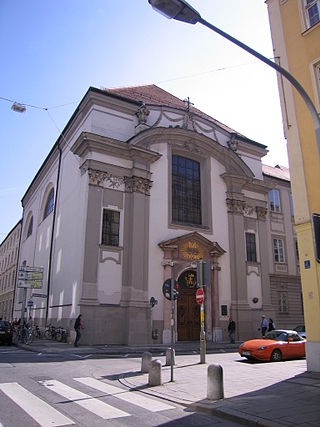
Damenstiftskirche St. Anna is a chapel in Munich, southern Germany.
Sight 5: Sitting Boar
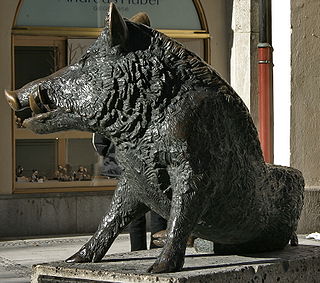
The Seated Boars are two identical bronze sculptures in Munich, each depicting a male wild boar.
Sight 6: Deutsches Jagd- und Fischereimuseum
The German Hunting and Fishing Museum is a museum exhibiting objects connected with the history of hunting and fishing in Germany or other territories which nowadays belong to it.
Sight 7: Palais Holnstein
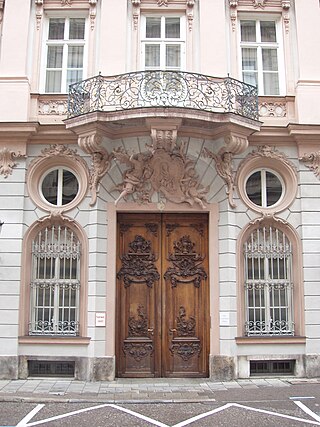
Holnstein Palace is an historic building in Munich, Southern Germany, which has been the residence of the Archbishop of Munich and Freising since 1818.
Sight 8: Palais Minucci
The Palais Minucci is a palace at Salvatorplatz 2 in the old town of Munich and was built in its present form as the city palace of the Counts Minucci in 1731. The building is a listed building.
Sight 9: Literaturhaus
The Literaturhaus München is a cultural institution in the center of Munich, dedicated to the teaching of literature and the organization of literary events.
Sight 10: Palais Neuhaus-Preysing
The Palais Neuhaus-Preysing is a palace in the old town of Munich, Prannerstrasse 2.
Sight 11: Salvatorgarage
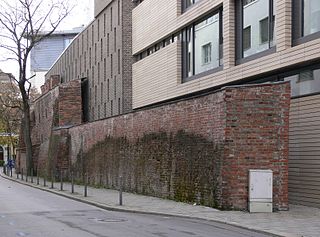
The Salvatorgarage is a multi-storey car park in Munich, Bavaria, Germany. In front of the garage building is an office and commercial building facing the square. The building complex, built between 1964 and 1965 by the Munich architect Franz Hart, is a listed building.
Sight 12: Palais Gise
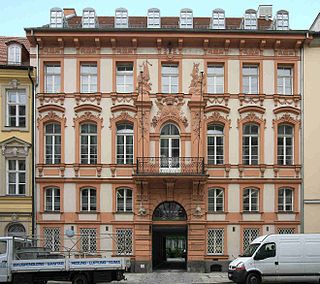
The Palais Gise is a city palace in the late Rococo style at Prannerstraße 9 in Munich. It was probably built around 1760/65 according to the designs of the Munich chief court architect Karl Albert von Lespilliez and is an architectural monument.
Sight 13: Dreifaltigkeitskirche
The Trinity Church is a religious building in Munich, southern Germany. It is a votive church and was designed in Bavarian Baroque style according to plans from Giovanni Antonio Viscardi from 1711 to 1718. It is a monastery church of the Carmelites and a church of the Metropolitan parish of Our Blessed Lady. During the Second World War this was the only church in the center of Munich, which had been spared from destruction by bombs.
Sight 14: Wittelsbacher Fountain
The Wittelsbach Fountain is a monumental fountain on the northwestern edge of Munich's city center, at the transition from Lenbachplatz to Maximiliansplatz. It was built between 1893 and 1895 according to plans by the sculptor Adolf von Hildebrand in the neoclassical style. His motif is an allegory of the elemental forces of the element water.
Sight 15: Bernheimer-Haus
The Bernheimer-Haus, also known as the Bernheimer Palace, is a residential and commercial building located on Lenbachplatz 3 in Munich. The building was built in 1888/89 by architect Friedrich von Thiersch with a neo-baroque style façade designed by his apprentice Martin Dülfer, making the building one of the first of its kind and later the most influential for all other buildings of its type in Munich. The building is protected as cultural heritage.
Sight 16: Neptunbrunnen
Neptunbrunnen is a fountain located in the Alter Botanischer Garten of Munich, Germany. It was sculpted in 1937 at the behest of the National Socialist government by Josef Wackerle. A muscular statue of neptune stands in the middle of the fountain, holding a trident on his shoulder, above a fish-tailed horse rising from the water.
Sight 17: Alter Botanischer Garten
The Old Botanical Garden is an urban park and former botanical garden in Maxvorstadt, Munich, Germany.
Sight 18: Basilika St. Bonifaz
St. Boniface's Abbey is a Benedictine monastery in Maxvorstadt, Munich, Bavaria, Germany. It was founded in 1835 by King Ludwig I of Bavaria, as a part of his efforts to reanimate the country's spiritual life by the restoration of the monasteries destroyed during the secularisation of the early 19th century.
Sight 19: Haus der Kulturinstitute
Münchner Haus der Kulturinstitute is located in Maxvorstadt, Munich, Bavaria, Germany.
Sight 20: Staatliche Graphische Sammlung
The Staatliche Graphische Sammlung in Munich (München), Germany, is a large collection of drawings, prints and engravings. It contains 400,000 sheets starting from the 15th century from various artists around the world. Along with Kupferstichkabinett Berlin and Kupferstichkabinett Dresden, it is the most important collection of its kind in Germany. It is owned by the government of Bavaria and located within the Kunstareal, a museum quarter in the city centre of Munich.
Wikipedia: Staatliche Graphische Sammlung München (EN), Website
Sight 21: Museum für Abgüsse klassischer Bildwerke
The Museum für Abgüsse Klassischer Bildwerke is located in the central Maxvorstadt district in Munich, Bavaria, Germany. It is situated, with a number of other cultural institutions, within the Münchner Haus der Kulturinstitute in Katharina-von-Bora-Straße, near the Königsplatz.
Wikipedia: Museum für Abgüsse Klassischer Bildwerke (EN), Website, Wheelchair Website
Sight 22: Bavarian Center for Transatlantic Relations
The Amerikahaus is a cultural institution on Karolinenplatz in Munich's Kunstareal, which opened in 1948 as the Amerika-Haus.
Sight 23: Prinz-Georg-Palais
The Prinz-Georg-Palais at Karolinenplatz 5 is a detached building that is registered as an architectural monument in the Bavarian List of Monuments.
Sight 24: Nornenbrunnen
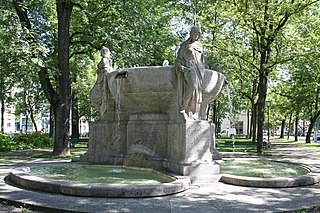
The Nornenbrunnen is a fountain in the center of Munich, Germany. It was built in 1907 based on a design by Hubert Netzer in Art Nouveau style. The fountain is constructed of Kirchheim limestone and depicts the Norns, the three Germanic goddesses of destiny: Urd, Verdandi, and Skuld, who lean against a large water bowl. Between the figures are three mouths from which the water pours into three shallow basins on the ground.
Sight 25: Feldherrnhalle
The Feldherrnhalle is a monumental loggia on the Odeonsplatz in Munich, Germany. Modelled after the Loggia dei Lanzi in Florence, it was commissioned in 1841 by King Ludwig I of Bavaria to honour the tradition of the Bavarian Army.
Sight 26: Palais Leuchtenberg
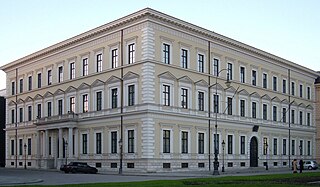
The Palais Leuchtenberg, built in the early 19th century for Eugène de Beauharnais, first Duke of Leuchtenberg, is the largest palace in Munich. Located on the west side of the Odeonsplatz, where it forms an ensemble with the Odeon, it currently houses the Bavarian State Ministry of Finance. It was once home to the Leuchtenberg Gallery on the first floor.
Sight 27: Haslauer-Block
The Haslauer Block is a listed classicist business, office and residential building on Ludwigstraße with house numbers 6–10 in Munich. The block is located between Von-der-Tann-Straße, which passes to the south, and Schönfeldstraße.
Sight 28: Deutsches Theatermuseum
The Deutsche Theatermuseum in Munich is a museum focused on history of the theater, and primarily devoted to the German-speaking theater history. It has its headquarters in the Churfürstlichen Gallerie, built in 1780–1781 by Carl Albert von Lespilliez, and located in the Galeriestraße 4a at Hofgarten. Director of the Museum is currently the theater, art and literary scholar Claudia Blank. She is also director of the photography collection.
Sight 29: Dianatempel
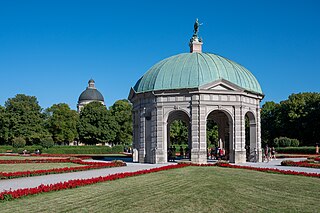
The Diana Temple in the Munich Hofgarten, the garden of the Munich Residenz, is a twelve-sided gazebo from the Renaissance period with eight open and four closed round arcades. It is the crossing point of the main and diagonal axes of the Hofgarten.
Sight 30: Herkulessaal
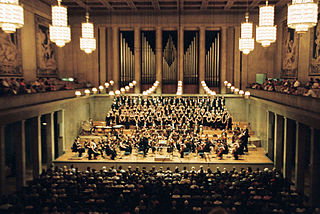
The Herkulessaal is a concert hall in the Munich Residenz.
Sight 31: Bayerische Akademie der Wissenschaften

The Bavarian Academy of Sciences and Humanities is an independent public institution, located in Munich. It appoints scholars whose research has contributed considerably to the increase of knowledge within their subject. The general goal of the academy is the promotion of interdisciplinary encounters and contacts and the cooperation of representatives of different subjects.
Sight 32: Kriegerdenkmal
The Kriegerdenkmal in the Hofgarten in Munich was built for commemorating those killed in action in World War I from Munich. It is located on the eastern end of the Hofgarten, in front of the Bayerische Staatskanzlei.
Sight 33: Hofbrunnwerk
The Hofbrunnwerk in Munich is a hydropower-powered pumping station that serves to supply the wells in the Hofgarten.
Sight 34: Harmlos
Harmlos is located in Maxvorstadt, Munich, Bavaria, Germany.
Sight 35: Prinz-Carl-Palais
The Prinz-Carl-Palais is an early classicist palace in Munich, Germany. It is the official residence of the Bavarian Prime Minister, but since moving into the new building of the Bavarian State Chancellery in 1993, it has only been used by the state government for representative purposes.
Sight 36: Haus der Kunst
The Haus der Kunst is a museum for modern and contemporary art in Munich, Bavaria. It is located at Prinzregentenstraße 1 at the southern edge of the Englischer Garten, Munich's largest park.
Sight 37: Palais Seyssel d’Aix
The Palais Seyssel d'Aix is a small castle at Kaulbachstraße 13 in the Maxvorstadt district of Munich. It is listed as an architectural monument in the Bavarian List of Monuments and has been the headquarters of the Institut français in Munich since 1954.
Sight 38: Historisches Kolleg
The Kaulbach Villa in Munich was built as a representative residence of the painter Friedrich August von Kaulbach in the Neo-Renaissance style. The building designed by Gabriel von Seidl at Kaulbachstraße 15 in the Maxvorstadt district is listed as an architectural monument in the Bavarian List of Monuments and is now the seat of the Historisches Kolleg.
Sight 39: St. Ludwig
Get Ticket*The Catholic Parish and University Church of St. Louis, called Ludwigskirche, in Munich is a monumental church in Neo-Romanesque style with the second-largest altar fresco of the world. The building, with its round arches called the Rundbogenstil, strongly influenced other church architecture, train stations and synagogues in both Germany and the United States.
Share
Disclaimer Please be aware of your surroundings and do not enter private property. We are not liable for any damages that occur during the tours.
GPX-Download For navigation apps and GPS devices you can download the tour as a GPX file.
